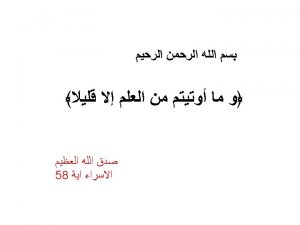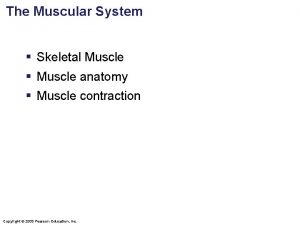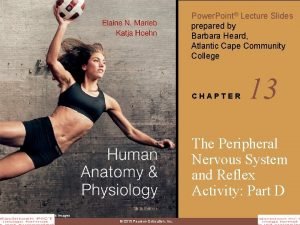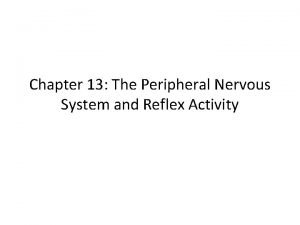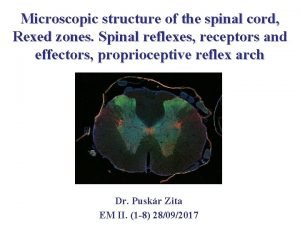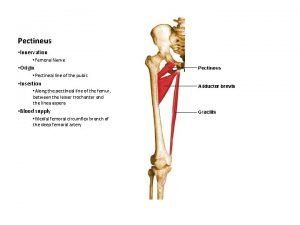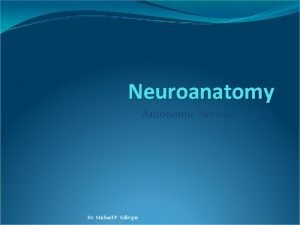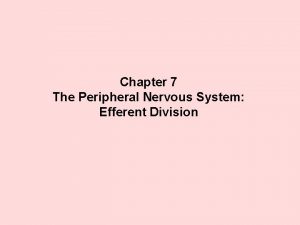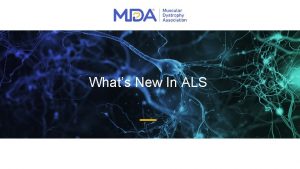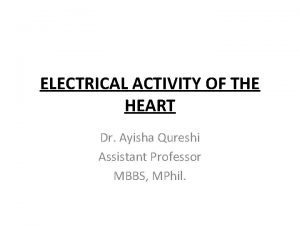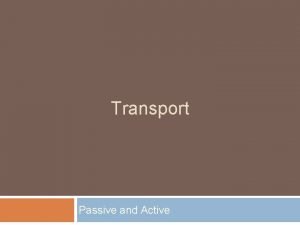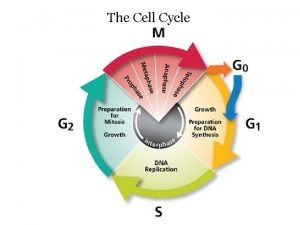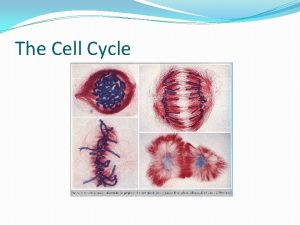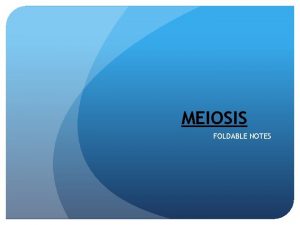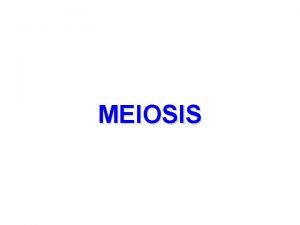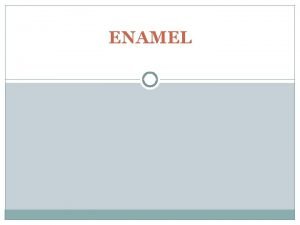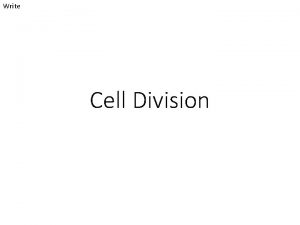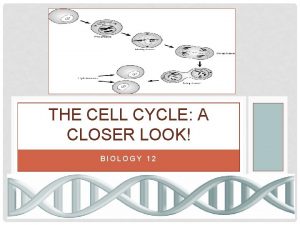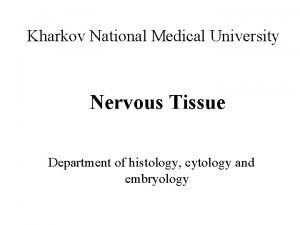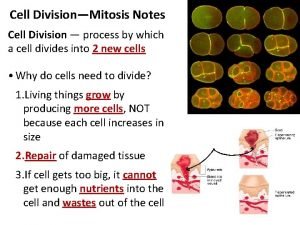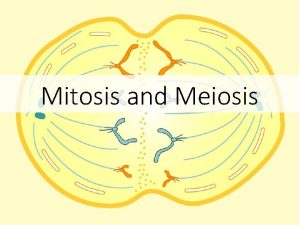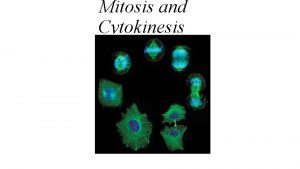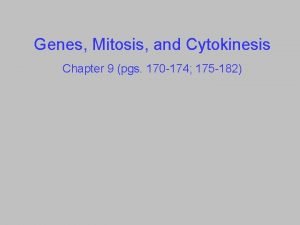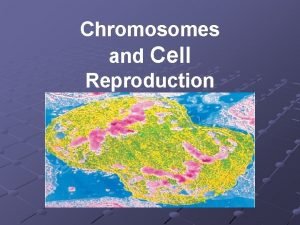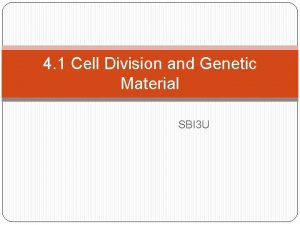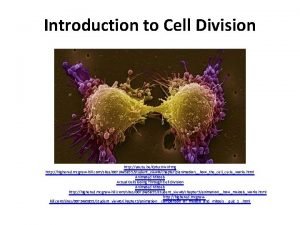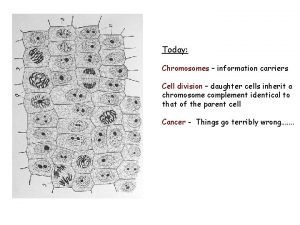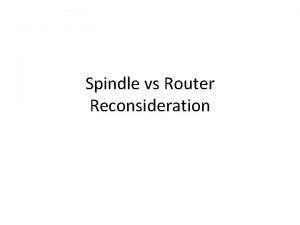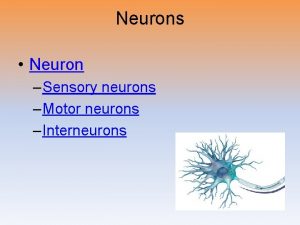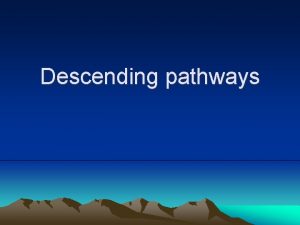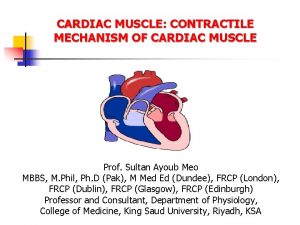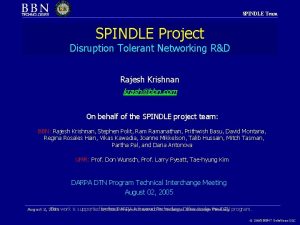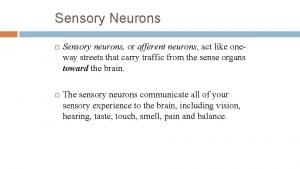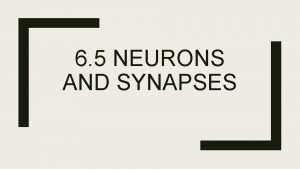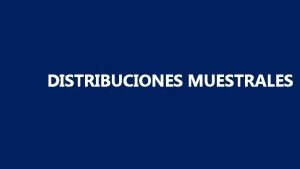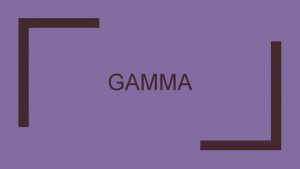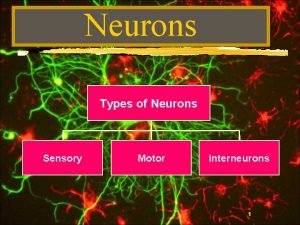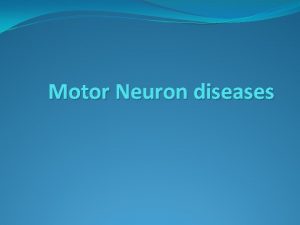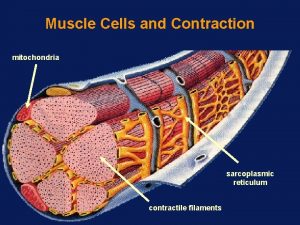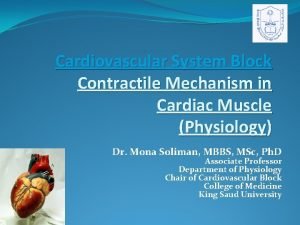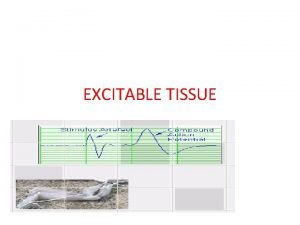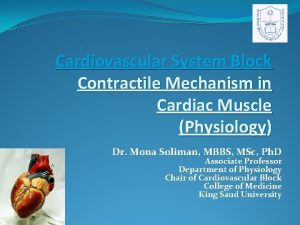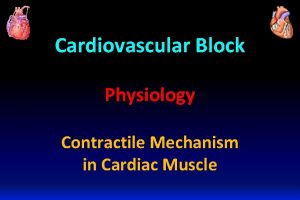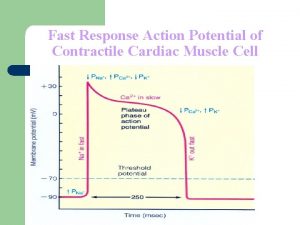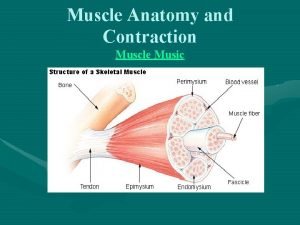Muscle spindle Gamma motor neurons innervate the contractile





























- Slides: 29

• Muscle spindle • Gamma motor neurons innervate the contractile sides of intrafusal muscle fibers • “resets” the 1 a afferents by tightening up if IMF are slackened • 1 a afferent neurons (dorsal root ganglion cell) innervate the noncontractile centers of intrafusal muscle fibers • Responds to changes in IMF length (and therefore extrafusal MF length)

• Prevents over-extension of muscles and protect the joints

• Golgi tendon organ • 1 b afferent neurons winds through the fibers • When muscles contract, fibers are tightened and 1 b afferent terminals are deformed and persistently signals the muscle tension

• Prevents over-contraction of the muscles and protect the tendons

• Saccule & utricle • Signals static head position and translational acceleration • Saccule: vertical acceleration • Utricle: horizontal acceleration

• The constant tug on the otoconia by gravity keeps populations of hair cells persistently depolarized and hyperpolarized, depending on which side of the striola they are located • Signals head positional information • Also sensitive to acceleration

• Semicircular canals signal angular acceleration (change signals only) • The cupula moves in the opposite direction of head turn • Endolymph has higher K+ concentration rather than Na+

• Depolarized on one side of the head, hyperpolarized on the other side




Area 3 b • cortical columns in Area 3 b receives inputs from one class of receptors from a specific area of the body

Projections between structures • • Layer 2/3 > cortex to cortex Layer 4 > thalamus to cortex Layer 5 > cortex to subcortical structures Layer 6 > cortex to thalamus

primary somatosensory cortex: within-region (column) processing the cortical column layer-specific inputs merging RA info. into SA info. ? dynamical into static? Pacinian’s/Meissner’s into Merkl’s? low-resolution into high-resolution?

SA 2’s

Memorize all the receptors! Mechanoreceptors Transient / RA Sustained / SA Superficial Meissner’s corpuscle Merkel disk -Prefer 20 -50 Hz -Low frequency vibrations & slippage -Small receptive field -Prefer 5 -15 Hz -Fine shape discrimination -Smallest receptive field Pacinian corpuscle Ruffini ending -Prefer 60 -400 Hz -High frequency vibrations -Largest receptive field -Direction of skin stretch -Shape of hand/ objects held in hand -Large receptive field Subcutaneous

Memorize all the receptors! Other receptors Transient / RA Sustained / SA Proprioceptive Muscle spindle Golgi tendon organ -Changes in length of muscle -Muscle tension Semicircular canal Saccule & utricle -Angular acceleration of the head -Static position of the head -Translational acceleration Vestibular

True or False: If a region of interest has greater f. MRI BOLD signal, the neurons in that region are firing more action potentials.

True or False: Generally speaking, action potentials come in different sizes and shapes.

Short Answer: Name the region that summates synaptic potentials and “decides” whether to fire an action potential

True or False: Different classes of mechanoreceptive signals are integrated in the thalamus.

True or False: The dorsal column medial lemniscal system crosses contralaterally in the spinal cord before ascending to the brain.

Short Answer: Name the structure that signals translational movement along the vertical axis.

Short Answer: The anterolateral pathway transmits signals from the ____ and ____ modalities of somatosensation.

True or False: Gamma motor neurons innervate the muscles that move your bones.

True or False: The hair cell inside the cupula on the left side of your head depolarizes if you suddenly turned your head to the right.

Short Answer: What happens to the neuronal activity of 1 a afferents if I were to bend your arm inwards from an extended position?

Short Answer: Name 1 hypothesized function of surround inhibition.

Surprise SAT question: MERKEL DISK : PACINIAN CORPUSCLE : : A. B. C. D. E. Hair cell : nociceptor Semicircular canal : utricle Golgi tendon organ : muscle spindle Medial lemniscus : cuneate fasciculus Saccule : Ruffini ending
 Somatic motor cortex
Somatic motor cortex Clasp knife reflex
Clasp knife reflex Contractile unit of muscle
Contractile unit of muscle Muscle bundle
Muscle bundle Muscle spindle diagram
Muscle spindle diagram Stretch reflex example
Stretch reflex example Muscle spindle histology
Muscle spindle histology Pectineus origin and insertion
Pectineus origin and insertion Autonomic motor neurons regulate visceral activities by
Autonomic motor neurons regulate visceral activities by Efferent motor neurons
Efferent motor neurons Upper motor neurons
Upper motor neurons Action potential in contractile cells
Action potential in contractile cells Is contractile vacuole active or passive
Is contractile vacuole active or passive When do spindle fibers first become visible brainpop
When do spindle fibers first become visible brainpop Ecological pyramid tropical rainforest
Ecological pyramid tropical rainforest Spindle fibers
Spindle fibers What is the function of spindle fibers
What is the function of spindle fibers What are spindle fibers attached to
What are spindle fibers attached to Enamel lamellae types
Enamel lamellae types Phase of mitosis
Phase of mitosis Spindle fibers
Spindle fibers Type of reflex arc
Type of reflex arc Chromosome coil
Chromosome coil Type of cell division
Type of cell division Prophase mitosis
Prophase mitosis Chapter 9 section 2 mitosis and cytokinesis
Chapter 9 section 2 mitosis and cytokinesis What are spindle fibers made of
What are spindle fibers made of Spindle fibers
Spindle fibers Youtu.beq
Youtu.beq Spindle fibers
Spindle fibers

